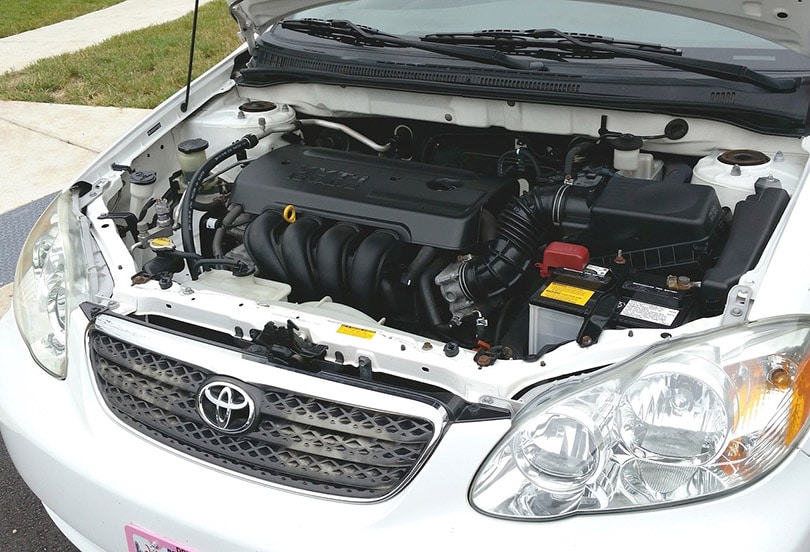What Happens If You Put Diesel In a Gas Car? What You Need To Know!
-
Pete Ortiz
- Last updated:

Inadvertently adding diesel to a gasoline tank is one of those things that’s difficult to get wrong. The nozzle of a diesel fuel pump has a design that makes it virtually impossible to fit into the filler neck of a gasoline tank. But, these things happen sometimes.
If you add diesel to a gasoline tank, you’ll significantly damage your car’s engine together with all the parts that are interconnected. Read on below to find out why.
The Octane Rating
The octane rating is a measurement of your fuel’s potential to resist what’s referred to as ‘pinging’ or ‘knocking’ during the combustion process. That ping or knock is usually the result of the fuel and air mixture detonating in the car’s engine prematurely. For it to be efficient, the ignition has to occur at a precise moment.
According to our verified sources, gasoline demands an octane rating range of 87 to 91 so as to achieve maximum efficiency. Diesel, on the other hand, will require a range of 25 to 30.
The octane rating range of diesel is way lower than that of gasoline. Meaning, that if you pump the fuel into a tank designed to only hold gasoline, the octane level will drastically drop, ultimately causing damage to the engine.
You’ll have contaminated the system, and the more you keep adding the fuel into the tank, the worse the damage will be.
Can a Gas Car Run On Diesel Fuel?
Well, this will depend on one thing: How much diesel did you add into the tank before realizing your mistake? If the amount added only accounts for 10% (or lower) of the total fuel in the tank, it will most likely run. But don’t expect it to operate like everything’s normal because it won’t.
You have to understand that adding these two fuels will automatically change the viscosity of the resulting mixture. Viscosity tells us a liquid’s ability to resist flow. In our case, high viscosity is not good news, because it means whatever small amount of gasoline that was left in the tank won’t completely vaporize whenever there’s a fuel injection event.
Speaking of fuel injections, let’s look at the difference between gasoline engines and those designed for diesel fuel.
Gasoline vs. Diesel Engines
If you look at the basics, you’ll realize there’s really no big difference between these two engines. They’ve both been designed to function as internal combustion engines that have the ability to transform the chemical energy found in their respective fuel, into mechanical energy.
Mechanical energy is the energy responsible for moving the cylinder’s pistons up and down, so as to rotate the crankshaft. As the crankshaft begins to rotate, the vehicle’s wheels will start turning, hence moving it forward or backward.
The conversion of that chemical energy into mechanical energy will happen in a series of tiny combustions. Some people like to refer to them as small explosions, but we find combustions to be more appropriate. Anyways, this is where the other difference comes in.
In a gas car, the gasoline will first be exposed to air, and then compressed by the engine’s pistons before being ignited by the sparks provided by the spark plugs. If it’s a diesel car, the fuel will be injected AFTER the air has been compressed. And it’s that compression that will ignite the fuel since air usually heats up once compressed.
Diesel engines don’t have spark plugs, simply because they don’t need them. On top of that, their fuel is never compressed.

What Should You Do If You’ve Added Diesel Into a Gasoline Tank?
The first thing that most people usually do is panic. But panicking will not resolve the problem at hand. If anything, it will only make things worse. Take solace in the fact that it wasn’t the other way around, where you would have had to deal with gasoline in a diesel tank—that’s far more dangerous.
If more than 10% of the fuel in that tank is diesel, the car won’t move. You’ll have to find a way to get it towed to a garage so that all of it can be drained. These are the steps we recommend you follow:
- Figure out how much fuel has gone in. Take deep breaths, relax, and then approximate the quantity of diesel that you think was pumped in. We know this will be difficult, but try to figure out if it’s just a couple of drops or a significant amount.
- Don’t try to start the car. If you’re not sure, take the safest route. We don’t want to worsen the situation by trying to operate the car. So at that moment, your primary goal should be to prevent the diesel from getting into the fuel line. Because we know once it manages to get in there, it will eventually find its way to the engine, and make it seize up. And believe us when we say, that’s one problem that you don’t want to deal with. You’ll have to act fast. Leaving the diesel to sit in there for an extended period of time is also a problem.
- Dial the mechanic. Go ahead and explain your situation and they’ll organize a tow truck to come to pick up the car. Remember to write down all the details.
Conclusion
It’s always important to pay attention to the small things while you’re at the gas station. Such a small mistake can snowball into something that forces you to break the bank. If it’s still a new car, and you’re not so sure which fuel to use, refer to the owner’s manual. Or check the label on the fuel’s door—it’s always there.
Featured Image Credit: paulbr75, Pixabay
Contents


